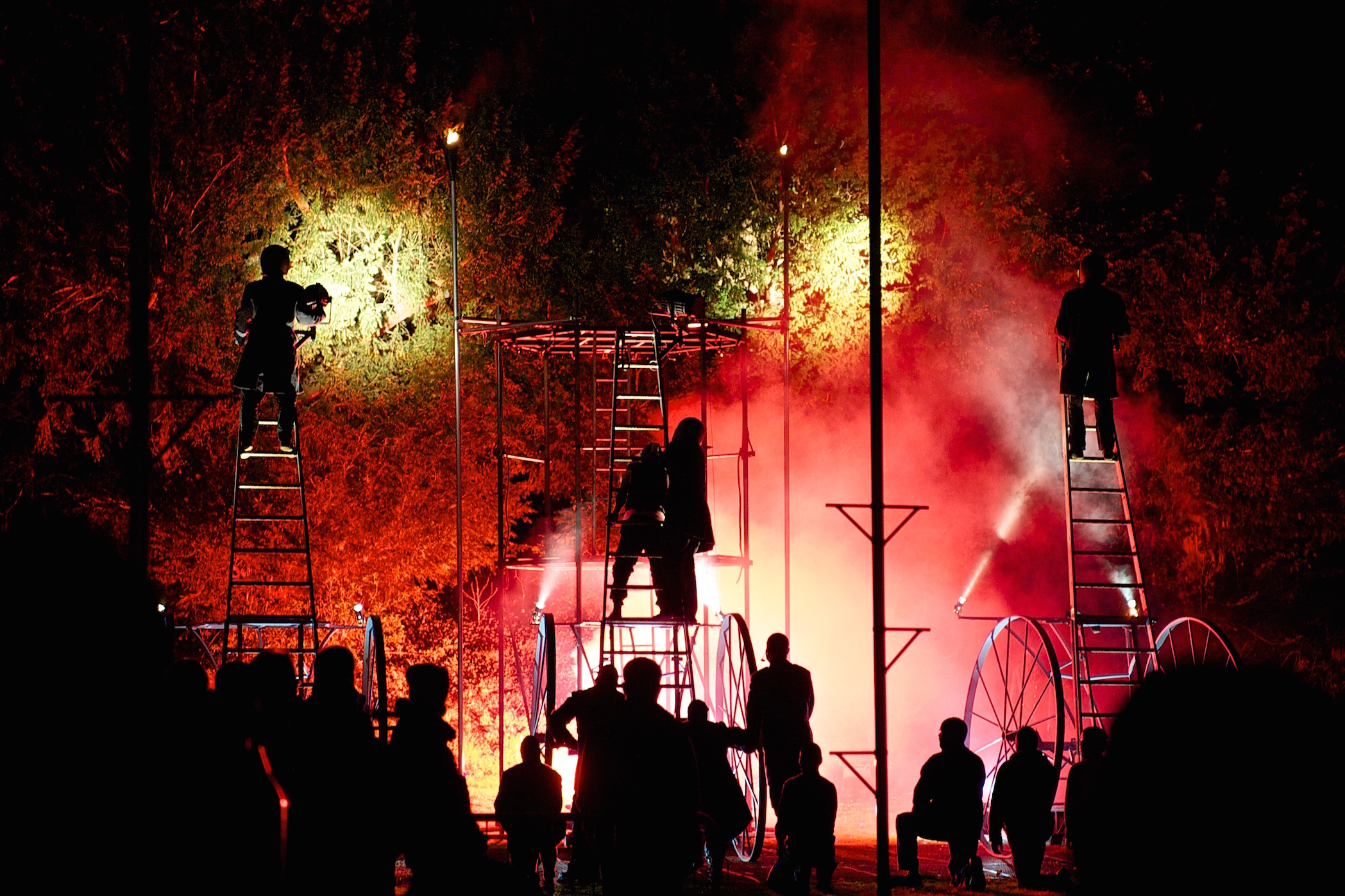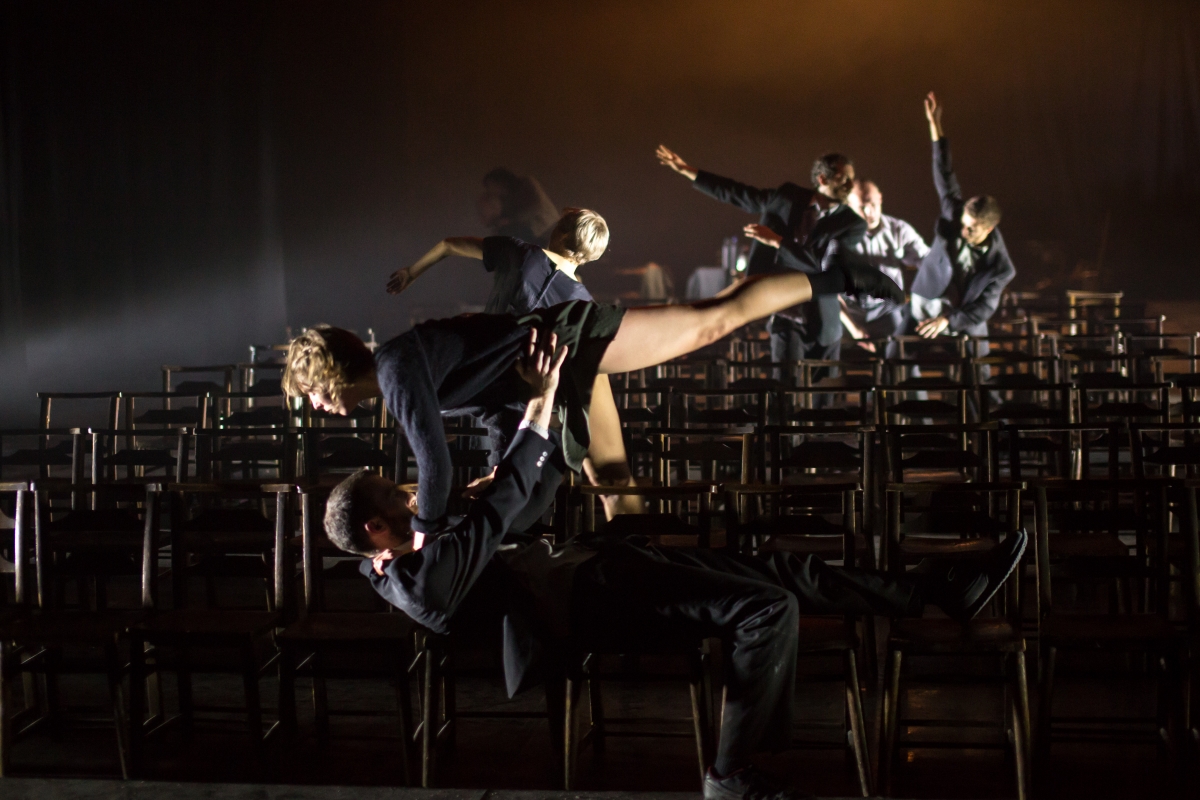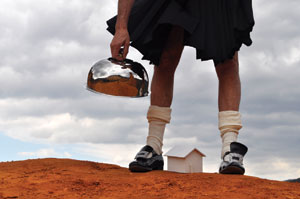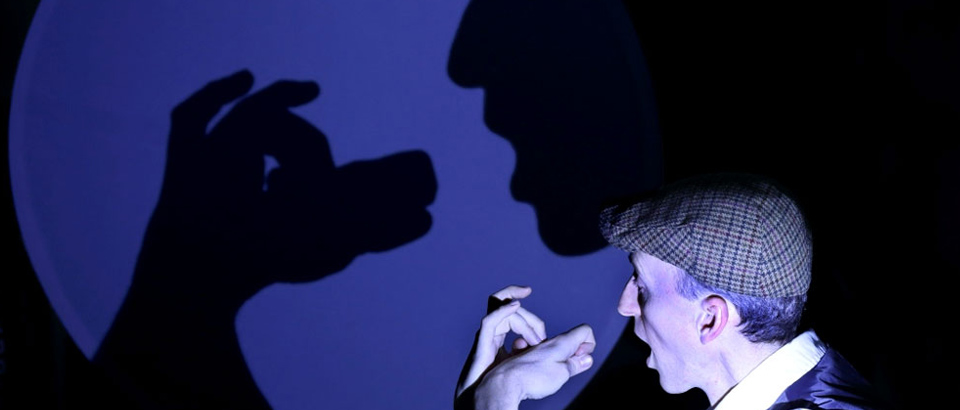In the still of a London night after dusk: overhead tannoy speakers broadcast the dense, loud sounds of helicopters and military aircraft, the reverberations enough to make you wince and cower slightly; and an endless litany of warnings and commands in a number of different languages. High on posts, twirling anemometers measure the wind speed. I’m in the eerie midst of something about to happen, and not sure where to place myself.
Someone’s walking directly toward me, deadpan expression, eyes meeting mine, and in front of my face a scorched page is ripped from a book, and thrust toward me. I have no option but to clutch its browning edges obligingly. Stamped boldly across it is the word ‘BANNED’. On closer inspection, I read the name Winston, and the word Newspeak, registering that this is a page from Orwell’s 1984.
But this is not 1984, it’s another number – 451. Periplum’s latest large-scale outdoor promenade performance is inspired by Ray Bradbury’s 1953 visionary novel Fahrenheit 451, set in a dystopian world where books and free-thinking are banned. (The title references the temperature that is, allegedly, the auto-ignition point of paper.)
I’m an expectant audience member now, somehow part of this story, wondering where to look next in this close-to-threatening landscape. Books are being ripped and thrust into hands all about me. This is a land where books are outlawed and firemen no longer put out fires, but instead are called upon to seek out books and burn any that are found.
And so, through immersive sound and action amongst the audience, begins this night of wonderfully sensory theatre. Guy Montag is the protagonist: a fireman who does his job well, yet a man in conflict, fascinated by these books and the radical secret knowledge they contain. We see, experience, the horrors that unfold through his eyes.
As the action unfolds, we often have to move out of the way swiftly. The swathe of audience I’m with divides as a ‘fire engine’ hurtles through the space, like a hot knife through butter. The firemen are coming, employed to burn all books – and here we are, implicated by the forbidden pages that we’re clutching. Not everyone is complicit in this world: there are dissenters, fugitives who fight the attacks on freedom of expression. Tall, scary mechanical floodlight-beaming apparatus stalks out these free-thinkers. The pyrotechnics are thrilling – yet within the sparks and flames, a woman is seemingly immolated high on a pyre of banned books.
Towards the end, an eruption of thousands of pages gush skyward and flutter high above us, like a papery lava – the dust of dreams, the ashes of intellectual annihilation. Our protagonist Montag (Milo Foster-Prior) is presented as a more human character than the others. Strong yet vulnerable, sturdy yet soft, so we warm to him. The image of him revolving against the night sky, tumbling and turning on a chair-lift that goes ever-higher throughout the show, offers an embryo of hope for the future. Other regular Periplum company members also give sterling performances. Ben Phillips is suitably terrifying yet seductive as the fire-chief – Montag’s superior, and simultaneously a father-figure and his nemesis. There are eight performers, who work seamlessly together as an ensemble, creating an extraordinary blend of physical theatre, live music, aerial circus skills, and pyrotechnics. Design, adaptation, script and direction is by Periplum’s co-directors, Claire Raftery and Damian Wright. Lighting is by Chris Umney. There is a beautiful blend of sound design (Aidan O’Brien) and music composition (Mike Simmonds and Barry Han) – and the extraordinary pyrotechnics are created by Lightfires.
451 is dark, it’s exciting, it keeps you a little breathless and looking over your shoulder. The surrounding landscape of Bethnal Green, real and urban, provides the ideal setting: tall London plane trees catch the incendiary glow, a large moon shining through the branches, and all around, cranes, helicopters and trains on bridges frame Periplum’s wonderful visuals and physical action. The perfect backdrop for a blazingly brilliant outdoor show.
Periplum’s 451 was presented at Bethnal Green Park as part of the Greenwich + Docklands International Festival 2015. It is supported by Without Walls, and will be presented at the Stockton International Riverside Festival, 31 July 2015. The show was created in collaboration with Corn Exchange Newbury and developed at the 101 Creation Centre.
For more on the making of 451, see the Total Theatre feature here. Image by Ray Gibson.





